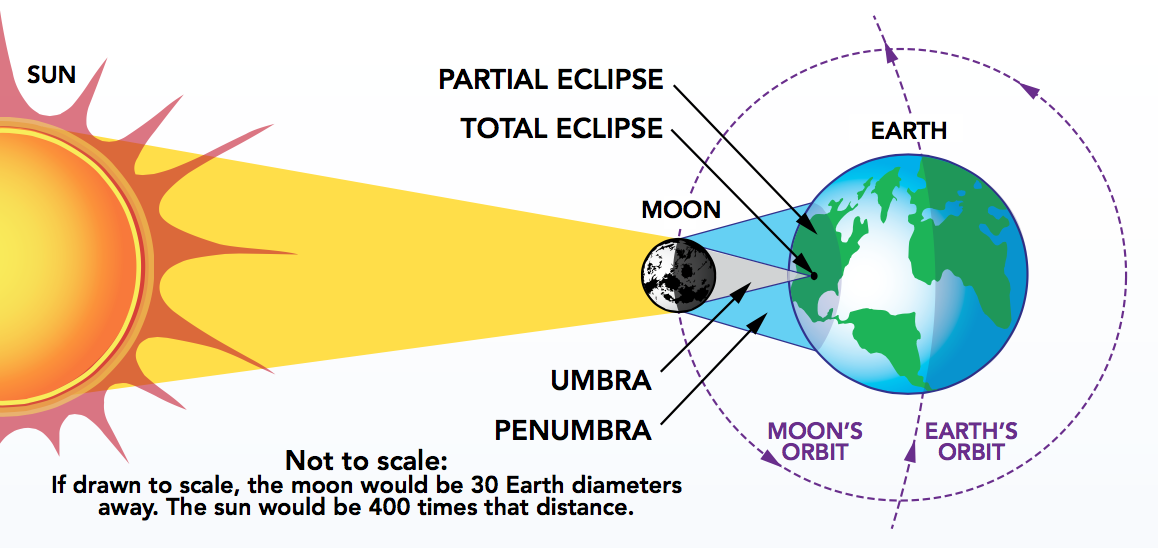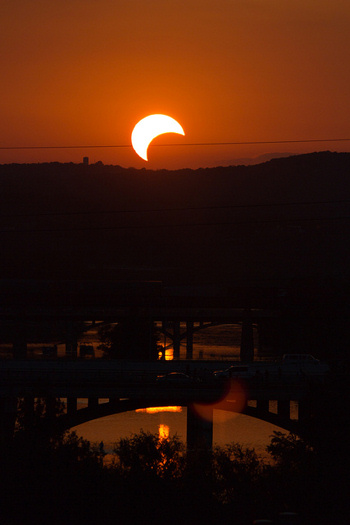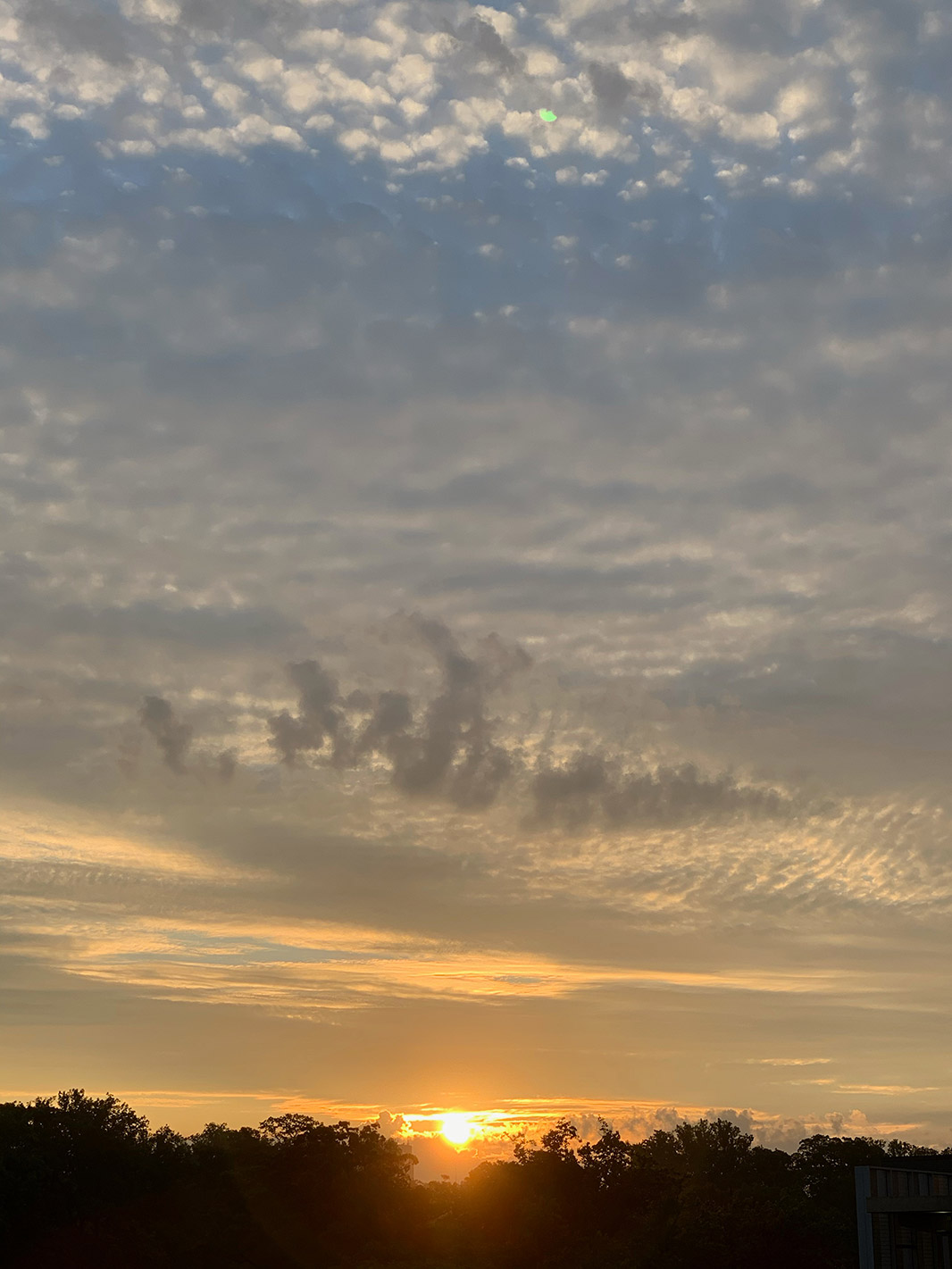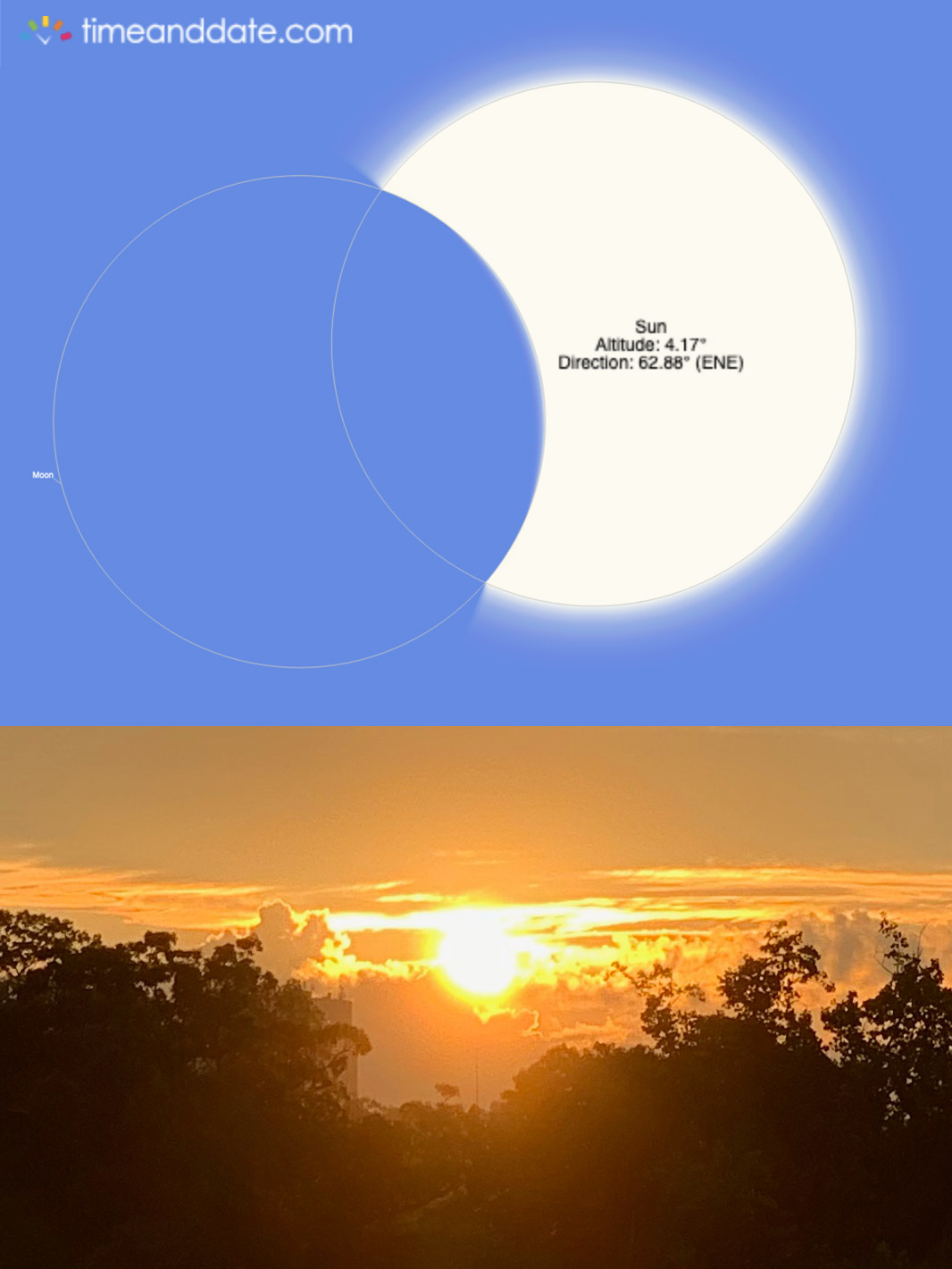Partial Solar Eclipses
🌞 🌑 🌎
When the Sun is completely blocked out we called it a total solar eclipse, and often this is what people think of with an eclipse. But a partial eclipse can be just as exciting.

The moon appears to block part—but not all—of the sun’s disk (photosphere).
The Sun, Moon and Earth are not in a straight line. It appears as if the Moon took a bite out of the Sun.
This composite image of seven pictures shows the progression of a partial solar eclipse near from Ross Lake, Northern Cascades National Park, Washington on Monday, Aug. 21, 2017. The second to the last frame shows the International Space Station, with a crew of six onboard, in silhouette as it transits the Sun at roughly five miles per second. A total solar eclipse swept across a narrow portion of the contiguous United States from Lincoln Beach, Oregon to Charleston, South Carolina. A partial solar eclipse was visible across the entire North American continent along with parts of South America, Africa, and Europe.
Photo Credit: (NASA/Bill Ingalls)


🌞 What is a Partial Solar Eclipse? 🌑
A partial solar eclipse happens when the Moon passes in front of the Sun, but only partially covers it—leaving a crescent of the Sun shining through! 🌞🌑
It’s like the Moon is taking a bite out of the Sun 🍪, but not enough to fully block it! The result? A super cool sky show where the Sun looks like a crescent or a “cookie bite.” 🍪✨
Unlike a total solar eclipse, where the Moon completely covers the Sun, in a partial eclipse, the Sun is only partially obscured. How much of the Sun gets covered depends on your location. Some places might see just a sliver of the Sun hidden by the Moon, while others get a larger chunk covered. 🍕🔭
It’s a cosmic event you won’t want to miss! But remember—never look directly at the Sun without protection, or you might end up with a bad case of “eclipse eye!” 👀🚫
Get ready for the celestial magic! 🌌🌞
PROTECT YOUR EYES!
Unlike a total solar eclipse, at no time will this be safe to view with the naked eyes. Be sure to carefully read the details to understand how to protect your eyes! Homemade filters or ordinary sunglasses, even very dark ones, are not safe for looking at the uneclipsed or partially eclipsed Sun.
The Experience
If you’re not in the direct path for a total or annular eclipse—but still within the outside of the path—this is what you may have seen with proper eye protection.


Eclipse Highlights
Winner!
Crescent sunrise ☀️🌙🌎❤️#PartialSolarEclipse
over Baltimore from my friend
Tim Shahan #SolarEclipse pic.twitter.com/C7yXaUtKDn— Justin Berk (@JustinWeather) June 10, 2021
This morning’s partial solar #eclipse over Toronto with the #CNTower. Hope you like it… https://t.co/BFyxFFw2DE for all of my night sky pics. #Eclipse2021 #solareclipse2021 #ShareYourWeather #PartialSolarEclipse 💕📷 pic.twitter.com/oHHUdW8eGx
— Kerry LH💫 (@weatherandsky) June 10, 2021
These are the stunning pictures of the annular solar eclipse that occurred on June 10, 2021.#Eclipse2021 #RingofFire #SolarEclipse pic.twitter.com/TDChd5Ao2g
— Berri News (@BerriNewsHQ) June 11, 2021
Husband got this shot through the clouds of the sunrise #PartialEclipse here in northern Massachusetts!
☀️🌗🌎(I was in bed, I don’t get up this early for anything other than a total eclipse 😝)#PartialSolarEclipse pic.twitter.com/O4odhyMfcM
— Erin M. May, PhD (@_astronomay) June 10, 2021
My best shots of today’s eclipse, captured through gaps in the clouds over Somerset.
All were taken using specialist solar filters. To get a sense of scale, have a look at the little Earth icon I’ve dropped into the 3rd pic.#PartialSolarEclipse #SolarEclipse #solareclipse2021 pic.twitter.com/VMNTJFbXjR
— Will Gater (@willgater) June 10, 2021
Amazing click of the ring of fire solar eclipse… https://t.co/6zTWR4FHEI#RingofFire #SolarEclipse #solareclipse2021 pic.twitter.com/78nG6rtPbF
— Planet Custodian (@PlanetCustodian) June 11, 2021
December 4, 2021
So excited to be starting my year at the South Pole as a winterover for the @SPTelescope with a spectacular partial solar eclipse! On the left is the South Pole Telescope and to the right is the @BICEP_Keck telescope, with the crew from both telescopes silhouetted in between pic.twitter.com/UnnECtbAUJ
— Aman Chokshi (@aman_chokshi) December 6, 2021
Even though the South Pole was outside of the totality of yesterday’s solar eclipse, they still got some pretty great views from the station galley! These awesome pictures were taken by UMN graduate student, Jamie Cheshire! pic.twitter.com/wTxsawM6FT
— BICEP/Keck (@BICEP_Keck) December 5, 2021

